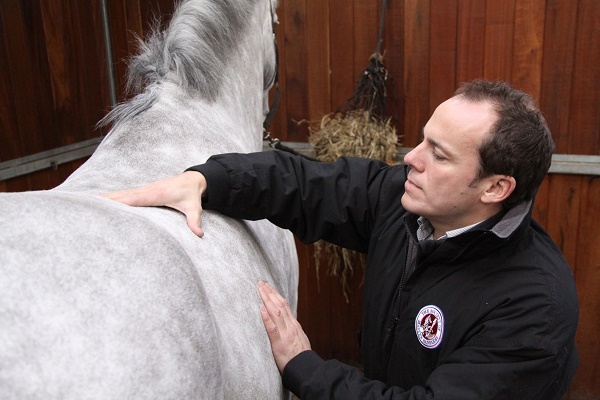Posted: 9th June 2017 | Back to news feed

Twice president of Society Master Saddlers, Lecturer / Assessor on Saddle fitting courses and Master Saddler Laurence Pearman answers five frequently asked questions on saddlery.
Q1. Can you tell me what influence seat size has on a saddle's fit for horse and rider? My horse is 17hh and quite chunky, but I'm quite petite and therefore I find saddles suitable for his size difficult to sit into.
The seat size can very much influence and effect the fit of the saddle and stability of the rider.
If the rider is petite, but has a large horse, this does not necessarily mean the rider has to have a large saddle.
If it is too large the rider will not be able to find the correct position, and their weight will be moving around from front to back with the rider tipping forward and knees being too far back from the knee rolls, also the pressure on the horse’s back will not be evenly distributed.
The saddle is designed to keep the rider in balance, keeping the weight even on the horse, equally the rider must not be too large for the saddle as this will create problems of the pressure not being correct for the horse, also there will be less bearing surface for the extra weight being carried.
Always have the saddle checked by a Qualified Saddle Fitter for size for rider and the fit on the horse.

Q2. I have owned my saddle for 10 years, having bought it new. I've noticed that the panels feel quite hard and lumpy. What should I do about this?
If the saddle has a flocked panel it is recommended to remove all old flocking after two years. The new wool will be softer and more forgiving on the horse. With use the flocking will become hard and lumpy as it gets compacted.
Also during the course of the year your horse may change shape, then the flocking may require some adjustment, this can be done very easily with flocking that has not had time to become too firm within the panel.
Where there are any lumps where the wool has become hard, this will cause pressure points on the horse which will result in swellings that come up after riding and will lead to permanent white marking in the coat.
So contact your Master Saddler / Qualified Saddle Fitter for a fitting and reflock to make your horse more comfortable.
Q3. Should new items of tack be 'broken in' gently to avoid any pinching or rubbing, or should they be OK to ride in 'normally' straight away?
When fitting items of new tack it is advisable firstly to check the fit is correct before putting on any preparations which may alter the colour if the item needs changing.
That done, then take all the components apart and using a good quality balm / conditioner apply sparingly with a cloth / sponge to both sides of the leather to render it to become more supple.
If the leather is not cared for it will become dry and brittle and will crack, the leather needs to be protected before use as it come into contact with sweat, heat, sun and very damp conditions.
Also with the more supple leather it will be more comfortable for the horse.
Always store your tack at room temperature.
Q4. People often state that you should be able to fit two fingers width under the pommel, but is this a good rule of thumb that a saddle fits?
The old adage of the two finger clearance under the pommel is a little out dated now.
We now look for sufficient clearance when the rider is mounted, but this is a very small part of what the saddle fitter looks for when checking a saddle.
Clearance is also required at the back of the saddle between the panels and the spine, to sit level from front to back, width of tree points in relation to horses withers, angle of tree rails, overall length of saddle, length of tree points and shape of panel, to name just a few of many others, which will be checked if you call in a Qualified Saddle Fitter.
Q5. After selling my horse, I have a saddle that I don't need. What's the best way of finding a new home for my saddle?
If you are not in need of the saddle anymore first thing to do is to find the current value of it. The best way to do this is to take it to your local Master Saddler to get it valued.
It may be that a straight sale to them will result, but certainly it would be a good idea to have the saddle checked for safety for a small fee, then if needed made safe, either for a private sale or it can be advertised in equine publications and social media.
It is best to always recommend the purchaser needs to get the fit checked by a Qualified Saddle Fitter.
The Equestrian Index newsfeed is compiled from articles submitted by advertising members and expresses the opinions of those members. Watsons Directories Ltd shall not be held liable for any inaccuracies or mis-statements therein.
